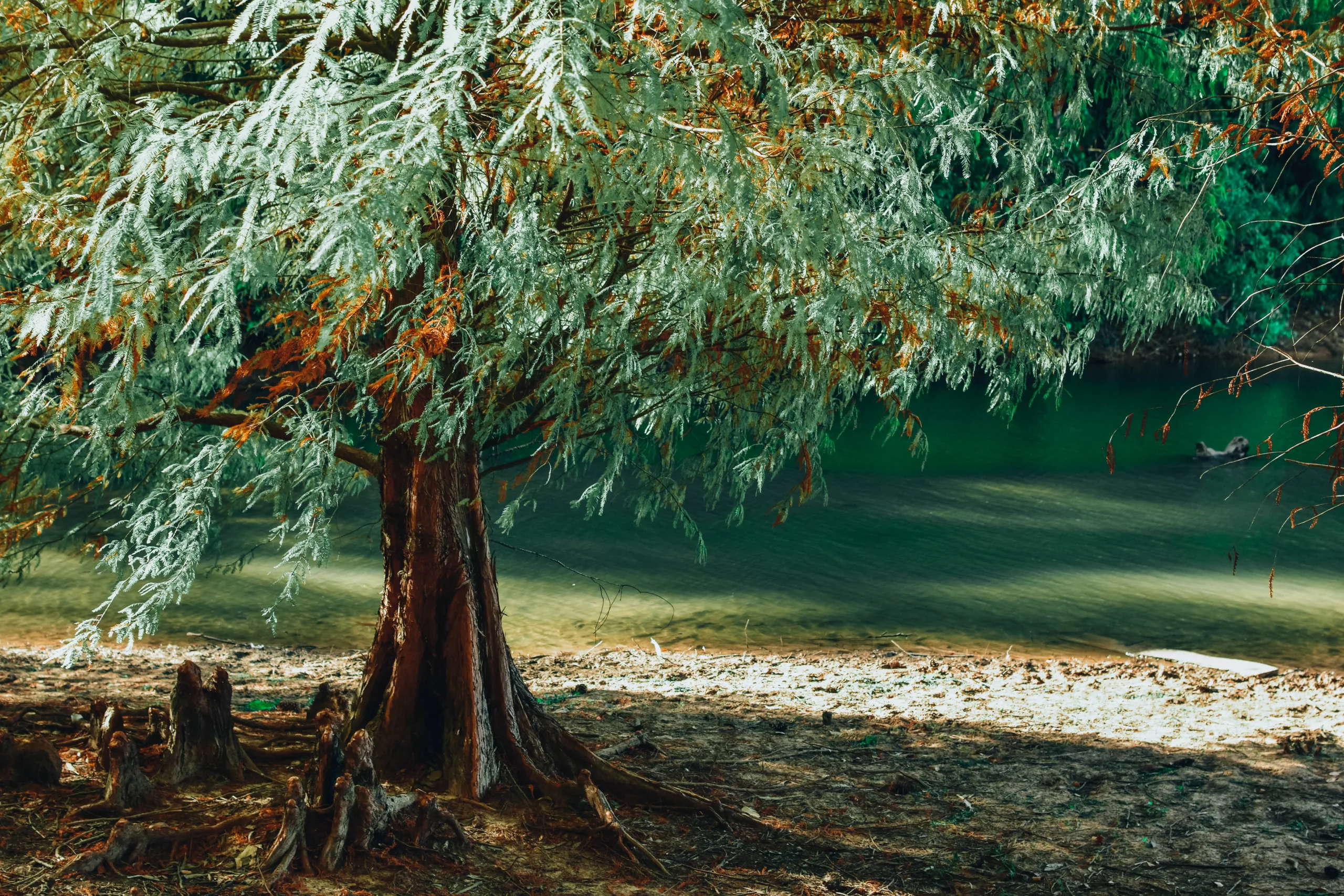Are you looking to add a touch of beauty and shade to your property in Texas? If so, you may be wondering if willow trees can grow in the Lone Star State. Willows are graceful trees that provide a graceful canopy, perfect for sitting beneath on those hot summer days. In this article, we’ll discuss whether or not willow trees can thrive in the Texas climate and what conditions they need in order to survive. We’ll also look at the various types of willow trees that are available and which ones are best suited for growing in Texas. With this knowledge, you can be sure your willow tree is well taken care of and looks beautiful for many years to come.
In Texas, some of the most common types of willow trees are Weeping Willow (Salix Babylonica), Black Willow (Salix Nigra), White Willow (Salix Alba), and Crack Willow (Salix Fragilis).
The Benefits of Planting Willow Trees in Texas
Willow trees are a popular choice for landscaping in Texas. They provide a variety of benefits, including shade, privacy, and noise reduction. Plus, they can be used to add visual interest to a landscape with their interesting shapes and bright colors. Willow trees are also drought-tolerant and require minimal maintenance once established. Here are some of the top reasons to plant willow trees in Texas.
Shade: Willow trees provide plenty of shade on hot days, making them ideal for outdoor living areas or patios. They also provide shelter from fierce winds and sun exposure, which can help protect your home and garden from damage.
Noise Reduction: Planting willow trees near windows or outdoor living areas can help reduce noise levels by blocking out loud sounds from the street or neighbors. This can create a peaceful oasis in your backyard and make it easier to relax and enjoy the outdoors.
Privacy: If you’re looking for some privacy in your yard, planting willow trees is a great way to achieve this goal. The dense foliage provides a natural privacy screen that can block out unwanted views from neighboring properties. Additionally, the large size of willow trees makes them difficult for trespassers or pests to climb over.
Beauty: Willow trees have an interesting shape that makes them stand out in any landscape. Plus, they have beautiful foliage that ranges from dark green to golden yellow depending on the species you choose. This makes them perfect for adding visual interest to any garden.
Drought Tolerance: Most species of willow tree are very drought tolerant once established, making them ideal for dry climates like Texas. They also require very little maintenance after planting as they don’t need regular watering or pruning like other types of trees.
As you can see, planting willow trees in Texas offers many benefits that make it a great choice for landscaping projects in this part of the country. From providing shade and noise reduction to adding beauty and privacy to your yard, there are plenty of reasons why these majestic trees should be part of your landscape!
Best Locations for Planting Willow Trees in Texas
Texas is a great place to plant willow trees for their beauty and shade. Willow trees are easy to grow and maintain, but they do need some specific kind of care. When considering where to plant a willow tree in Texas, the location should have plenty of water, good drainage and lots of sunlight.
The ideal location would be near a pond or other body of water, as this will provide the necessary moisture for the tree’s growth. Good drainage is also important so that the willow tree’s roots do not become waterlogged or rot away. The best soil for planting a willow tree is one that is rich in organic matter and drains well.
When it comes to sunlight, willow trees need at least six hours of direct sun each day and prefer an area with full sun exposure. This means that trees planted in areas with partial shade may not thrive as well as those planted in full sun locations. Additionally, if planting near a building or other structure, make sure there is enough space for the tree to grow without becoming overcrowded.
When selecting a spot for planting a willow tree in Texas, look for areas with adequate moisture, good drainage and plenty of sunlight. Make sure there is adequate room so that the tree has room to spread its branches without crowding any buildings or structures nearby. With proper care and maintenance, your willow tree should thrive in its new home!
Weather Conditions for Optimal Growth of Willow Trees in Texas
Willow trees are one of the most popular trees in Texas, due to their hardy nature and beautiful foliage. They are often found growing along rivers, streams, and wetlands and thrive with the right weather conditions. To ensure that your willow tree grows to its fullest potential in Texas, it’s important to understand what kind of weather is best for optimal growth.
The best temperatures for willow trees in Texas vary depending on the species. Generally speaking, willow trees prefer temperatures between 65-85 degrees Fahrenheit during both the summer and winter months. High temperatures can be damaging to willow trees, so it’s important to keep them out of direct sunlight when possible.
The amount of rainfall is also an important factor to consider when planting a willow tree in Texas. Willow trees require deep, regular watering throughout the growing season and can survive on very little water during dry periods if they are established properly. In general, it is recommended that willow trees receive between 1-2 inches of water each week during the summer months, with occasional deep watering sessions every two weeks or so.
Finally, wind plays an important role in the health of willow trees in Texas. Strong winds can damage branches and cause them to break off or become weak over time. To protect your willow tree from strong winds, it’s important to prune it regularly and provide some type of wind protection around its base.
Overall, by understanding the optimal weather conditions for a successful growth cycle in Texas, you can ensure that your willow tree thrives for years to come!
Soil Requirements for Willow Trees in Texas
Willow trees are a common sight in the state of Texas, and they require specific soil requirements to thrive. The ideal soil for willow trees is deep, moist loam that drains well. Sandy or clay soils should be amended with compost or other organic material to improve drainage and aeration. The pH of the soil should be between 6.0 and 7.0; if it is more acidic, add lime to increase the pH. Additionally, willows need plenty of available nitrogen to grow healthy foliage and blooms. Adding fertilizer at planting time and periodically throughout the year can help provide this essential nutrient.
Willow trees will not tolerate standing water around their roots, so it is important to make sure that the soil drains well. If your soil is heavy clay or prone to flooding, consider planting your willow in a raised area or berm so that excess water can drain away from its roots. Additionally, mulching around the base of the tree can help keep moisture levels consistent and prevent weeds from competing for nutrients.
With proper care and attention, willow trees can thrive in Texas for many years. By providing the right type of soil with good drainage and enough nitrogen, you can ensure that your willow tree remains healthy and robust for years to come!

Care and Maintenance of Willow Trees in Texas
The willow tree is a popular choice for many gardens and landscapes in Texas. With its graceful foliage, delicate flowers, and bright yellow-green leaves, the willow tree offers a beautiful addition to any landscape. However, proper care and maintenance are essential for the success of your willow tree. Here are some tips for keeping your willow tree healthy in Texas:
Watering: The most important aspect of caring for willow trees in Texas is providing enough water. The soil around the tree should be kept moist but not soggy; it is best to water deeply once or twice a week depending on conditions such as temperature and rainfall. In hot weather, the soil should be checked more frequently to ensure adequate moisture.
Fertilization: Fertilizing your willow tree is key to keeping it healthy and growing well. A slow-release fertilizer formulated for trees is recommended every six months during the growing season. Be sure to follow the instructions on the package for correct application.
Pruning: Pruning should be done regularly to remove dead or damaged branches and encourage new growth. Prune lightly in late winter or early spring when the sap is running. Make sure not to prune too severely as this can damage the tree.
Mulching: Applying a thick layer of mulch around your willow tree helps retain moisture in the soil and also reduces weeds. A layer of two to four inches of organic mulch such as wood chips or shredded bark works best. Be sure not to cover up any part of the trunk as this can cause rot.
With proper care and maintenance, your willow tree can thrive in Texas for many years to come!
Pests and Diseases that Affect Willow Trees in Texas
Willow trees are popular ornamental trees in Texas, but they can be susceptible to pests and diseases. Common pests of willow trees include the willow leaf beetle, willow leaf roller, aphids, and scale insects. All of these pests feed on the leaves of the tree, which can cause damage and can lead to discoloration or death of the leaves. The bark of the tree is also a target for pests such as borers and bark beetles, which can create tunnels beneath the surface of the tree that can weaken or kill it.
In addition to pest infestations, willow trees in Texas are also vulnerable to various diseases. Willow scab is a fungal disease that causes yellow spots on the leaves and stems of infected trees. Willow anthracnose is another fungal disease that causes wilting and discoloration of foliage, as well as premature leaf drop. Verticillium wilt is yet another fungal disease that affects willows in Texas; it affects the vascular system of the tree, leading to wilting and branch dieback.
It’s important to identify signs of pest infestation or disease early on so that you can take steps to protect your willow tree. If you notice any signs of damage or discoloration, contact a professional arborist right away for help with diagnosis and treatment. With proper care and maintenance, you can keep your willow tree healthy for many years to come!
Pruning and Trimming Requirements for Willow Trees in Texas
Willow trees are a popular choice of tree in Texas due to their graceful appearance, fast growth rate, and low maintenance needs. However, even though willow trees are relatively easy to care for, they do need regular pruning and trimming to stay healthy and strong. Pruning willow trees helps keep them from becoming overgrown and unmanageable while trimming can help maintain the desired shape of the tree.
When pruning a willow tree in Texas, it is important to keep in mind that it is best to prune during the dormant season or late winter. During this time, the tree will have shed its foliage, making it easier to identify any dead or damaged branches that need removal. It is also important to remember not to remove more than one-third of the foliage from your willow tree at once as this can put unnecessary stress on the tree.
When it comes to trimming a willow tree in Texas, it is important to understand that the primary goal should be maintaining the desired shape of the tree. This means avoiding heavy pruning unless absolutely necessary as this can cause damage or death of branches and leaves. Additionally, it is important not to cut too close as this can leave an unsightly stubble on your willow tree which can be difficult to remove without damaging further growth.
Overall, proper pruning and trimming of your willow tree in Texas is essential for keeping it healthy and looking its best. By following these tips you can ensure that your willow tree remains strong and beautiful for many years to come.

Conclusion
In conclusion, willow trees can grow in Texas, but it is important to consider the climate and soil conditions of the area. Willows can grow in a variety of climates, but they are best suited for areas with warm winters and plentiful precipitation. Soil should also be sandy or loamy, as this type of soil allows water to drain easily and provides proper nutrients for the tree. With these conditions met, willow trees can thrive in Texas.
When planting a willow tree, it is important to choose a young tree that is well adapted to local conditions. Additionally, it is essential to give the tree plenty of water during the first few years of its life as it establishes itself in its new environment. With proper care and maintenance, a willow tree can provide shade and beauty in Texas gardens for many years to come.
Mark Hoffman is a dedicated arborist and tree care specialist with over a decade of experience. His love for trees began when he visited Yosemite National Park as a teenager and was awestruck by the giant sequoias. Mark pursued his passion by studying forestry at Michigan Technological University, where he earned a Bachelor of Science degree.
Since then, he has worked tirelessly in the field of arboriculture, helping to preserve and protect trees in his community. His expertise and dedication have made him a respected leader in the industry and a valuable resource for anyone seeking advice on tree care.
